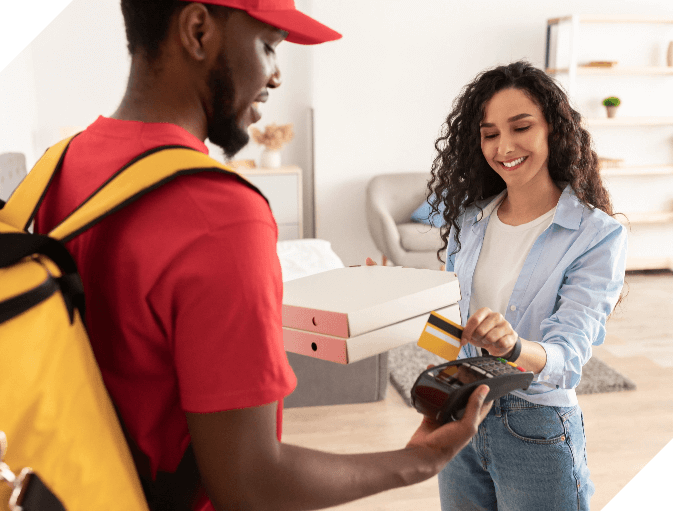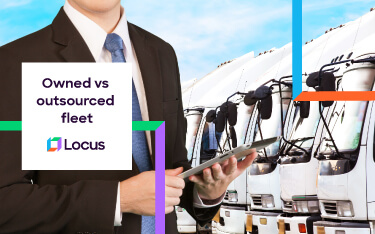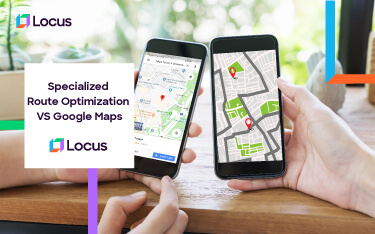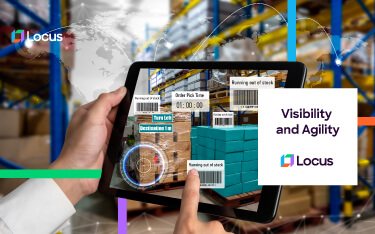Welcome to the new world of consumer behavior!
Gone are the days when customers waited in long queues while shopping.
Online shopping is steadily increasing in popularity, however. In 2021, 74.3% of the American population shopped online, and this share will grow to 80.4% by 2025. The big reason for this promising growth in online shopping is the convenience it offers to customers.
But there is another side to this story. Another latest survey mentions that 57% of US online shoppers consider fast shipping an important criterion when they check out. For many, it is not just a question of on-time deliveries anymore. To meet modern customers’ expectations around faster deliveries, businesses must get their last-mile delivery right to maximize their delight after making a purchase.
Managing last-mile fulfillment is tricky. Many businesses are grappling with inefficiencies in last-mile delivery logistics, and you’re not alone. If you want to overcome all the barriers in this dynamic space to win more loyal customers, read on!
What is Last-mile delivery?
Last-mile delivery is the last-leg of a supply chain that deals with movement of goods and services from warehouses to the customer destination. This is the most critical part of the supply chain that determines customer satisfaction.
Steps involved in last-mile delivery
Firstly, the customer places an order
Then, the business receives the order, and sends it to the transportation hub that’s placed near the customer
Dispatch managers at the transportation hub then assign the order, and plans the most efficient routes for reaching the destination
Later, the on-ground staff scans the order, and loads it into his/her delivery vehicle
Finally, the order reaches the customer
Why is Last-mile delivery important?
Last-mile fulfillment is one of the most difficult aspects to get right. Adding to the challenges are the various demands that pull businesses in different directions. For instance, customers want faster deliveries but are also concerned about rising carbon emissions. To top this, the cost per delivery must also be viable to contribute to revenue. Here are four reasons why last-mile delivery is important.
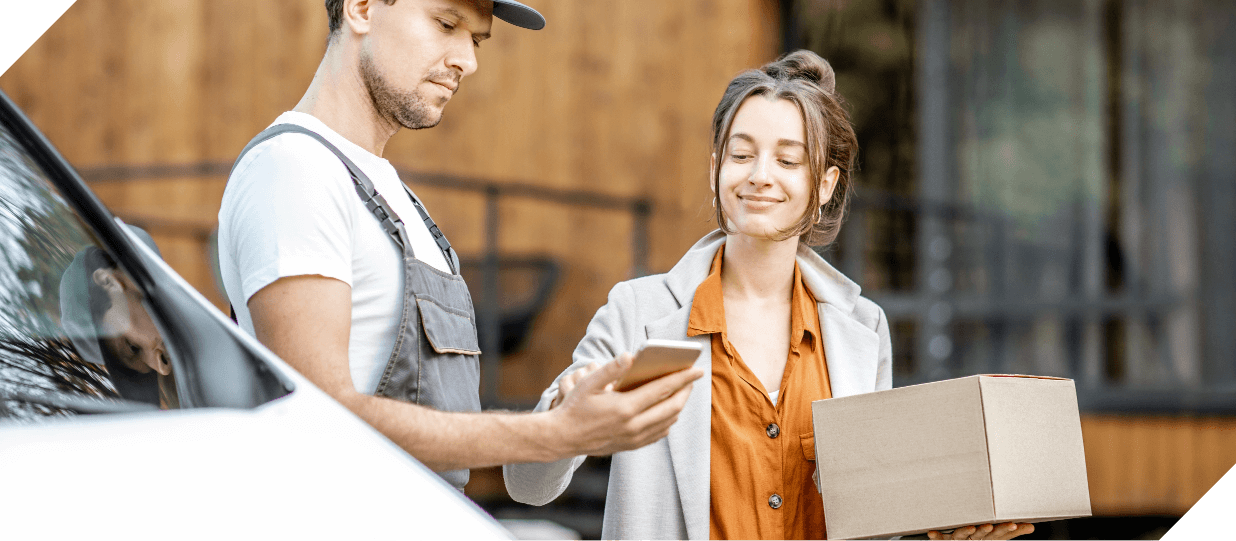
- The smallest last-mile inefficiencies can prove expensive
-
The margin of error is very small for last-mile delivery. This is because it accounts for 53% of total shipping and 41% of total supply chain costs. And seemingly small factors can compound over time to have a great effect on your overall costs. For example, if your routes stop at traffic stops longer and often, the transit time of your fleet and idling costs increases, along with fuel costs.
Another important aspect that makes your last-mile expensive is failed deliveries. If your customers are not available at the time of delivery, your driver must make successive trips to ensure a successful delivery attempt. Apart from a poor customer experience, every failed delivery also multiplies your cost by four times. This is why last-mile delivery is critical to bring down your total shipping costs.
- Fulfill customers’ demand for speedy deliveries
-
In today’s day and age, imagine if a business can only deliver orders to customers a week after being placed. What would be a customer’s immediate response? They would cancel the order and move to another competitor who provides them a quicker delivery option, often within the same day itself without a second thought.
A World Economic Forum report states that faster delivery has become the new normal. As a result, delivery options like same-day delivery, on-demand delivery and next day delivery are quickly becoming the new norm. Your customers always remember a poor delivery experience, and to improve the speed of deliveries and build brand loyalty, it is necessary for your business to get last-mile delivery right.
- Last-mile is the first impression for the customer
-
Your customers need not know the effort that went into an order to reach their doorstep. What is important is the convenience and the timeliness of their order reaching them.
In a PwC report, 73% of customers pointed out that customer experience is the important factor that determines their purchasing decisions. Also, it states that 59% of customers will walk away after several bad experiences and 17% after one bad experience.
If your last-mile delivery is less than delightful, your customer is at a risk to move to the competition. Which is why, more often than not, the primary factor behind the success of every brand in last-mile delivery is exceptional customer experience.
- Sustainability no more an afterthought
-
Due to increased customer awareness around the impact of our current manufacturing and consumption patterns, sustainability has become a top priority for all delivery businesses. In a 2021 survey, 44% of consumers mentioned that they buy from brands that have a clear commitment to sustainability.
A World Economic Forum survey states that emissions from delivery traffic will increase by 32% until 2030. This is not a healthy trend and as a result, consumers are highly concerned about the carbon emissions from last-mile delivery.
With demand for last-mile delivery expected to grow by 78% globally, there is an urgent need to bring down carbon emissions. By actively cutting down these emissions in last-mile fulfillment, we can contribute to the overall sustainability of operations alongside improved operational efficiency.
Challenges in Last-mile delivery
From traffic congestion, high delivery costs, lack of efficient delivery routes, and limited delivery options, the last-mile is quite challenging to get right.
Understanding the challenges of last-mile delivery is crucial for businesses and organizations as it can greatly impact customer satisfaction and, ultimately, the success of the company.
Read more to know about the diverse last-mile delivery challenges that can be solved to help companies reduce costs, empower workers to make more deliveries, and improve the overall customer experience.
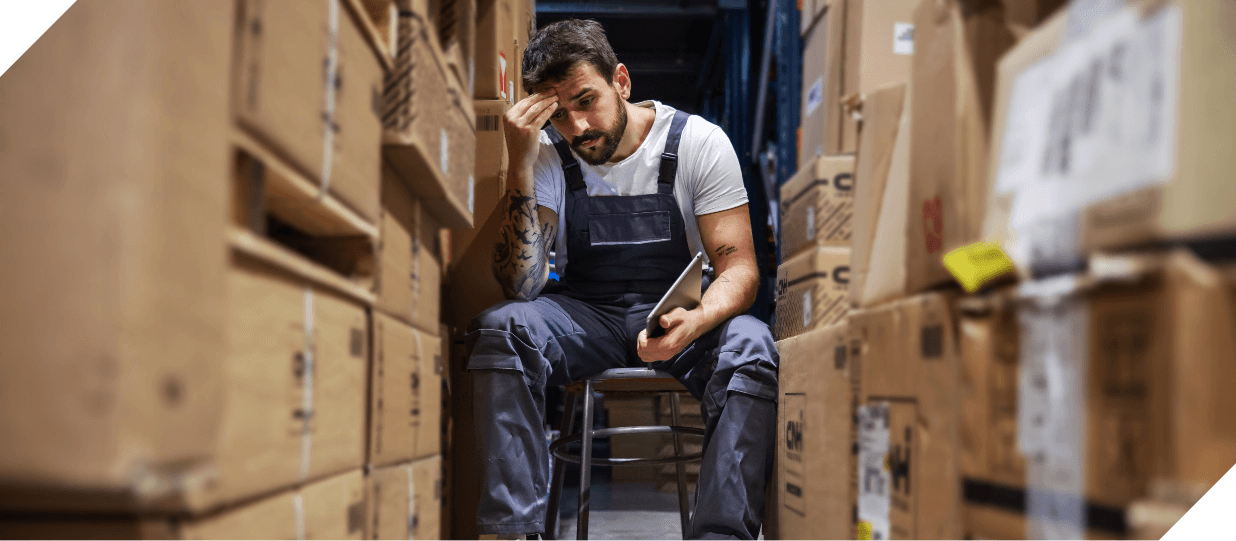
- Inefficient route planning
-
Inefficient route planning snowballs into delays and kills customer satisfaction. Also, it does not consider multiple factors like traffic and sequence of deliveries. How could you plan the sequence of 20 deliveries for a driver on a single shift and a peak weekend?
Manual planning with spreadsheets makes the lives of drivers and fleet managers more difficult. Maps, too, are not dedicated route planners and do not provide you with the necessary last-mile assistance. This is why there is a need to invest in a tool like a route planning software.
- Failed or delayed deliveries
-
Another big challenge in last-mile delivery is the inability to deliver orders in the customer's preferred time windows, resulting in failed or delayed deliveries.Today, fulfilling timely deliveries is getting more challenging due to increasing customer demand for speedy deliveries and friction in deliveries. Failed deliveries can increase your operational costs, harm your brand’s reputation, and slow down business growth.
- Lack of end-to-end visibility
-
Gone are the days where your business provides tracking codes to check the status of deliveries. Modern customers want to witness what’s happening in the last-mile till the order reaches them.
End-to-end visibility has become a necessary component because customers get real-time status on the order fulfillment. When your customers are unable to track the deliveries, they become hesitant and make WISMO (Where Is My Order) calls. This adds up your customer service expenses.
- Rising delivery costs
-
A survey states that cost is the biggest challenge for logistics providers in last-mile delivery in the United States. Businesses managing last-mile deliveries on their own have numerous costs to manage—failed delivery costs, additional stops on delivery routes, complex routes, driver salaries, fuel expenses, time under the roof cost, and reattempted delivery costs.
Any form of increase in delivery costs and passing those costs on to customers forces them to abandon the cart. In addition, these costs can double or triple if you fail to complete your deliveries in the first attempt. So, it has become costlier for businesses to set up the right infrastructure for timely deliveries and manage them.
- Lack of efficiency
-
When your last-mile delivery lacks efficiency, it results in delays in delivery and increased customer disappointment. More than all this, it becomes much more difficult for your business to manage bulk orders.
With an inefficient delivery process, your on-ground staff find it challenging to complete their shift with maximum productivity. They end up working for longer hours, which disturbs their work-life balance, and further brings down their productivity.
- Unanticipated events
-
Unpredictable situations like traffic, bad weather or vehicle issues are delivery exceptions that disrupt your last-mile delivery. Often these situations are out of the immediate control of your drivers.
To manage these unpredictable events, you need to have contingency plans that ensure effective communication among your teams, as well as end-to-end visibility. This helps you encounter adverse events and plan dispatches for the orders.
Want to know how Locus can boost your profits?
6 tech solutions to solve your Last-mile logistics issues
In this decade, leading e-commerce companies like Amazon have set the bar high with their ability to deliver in shorter time frames while notifying customers of their order status in real time. Other brands are striving hard to live up to customer-preferred delivery deadlines consistently.
To deliver products quickly and efficiently, provide a superior customer experience, and survive in a complex and competitive landscape, there is a need to invest in tech solutions.
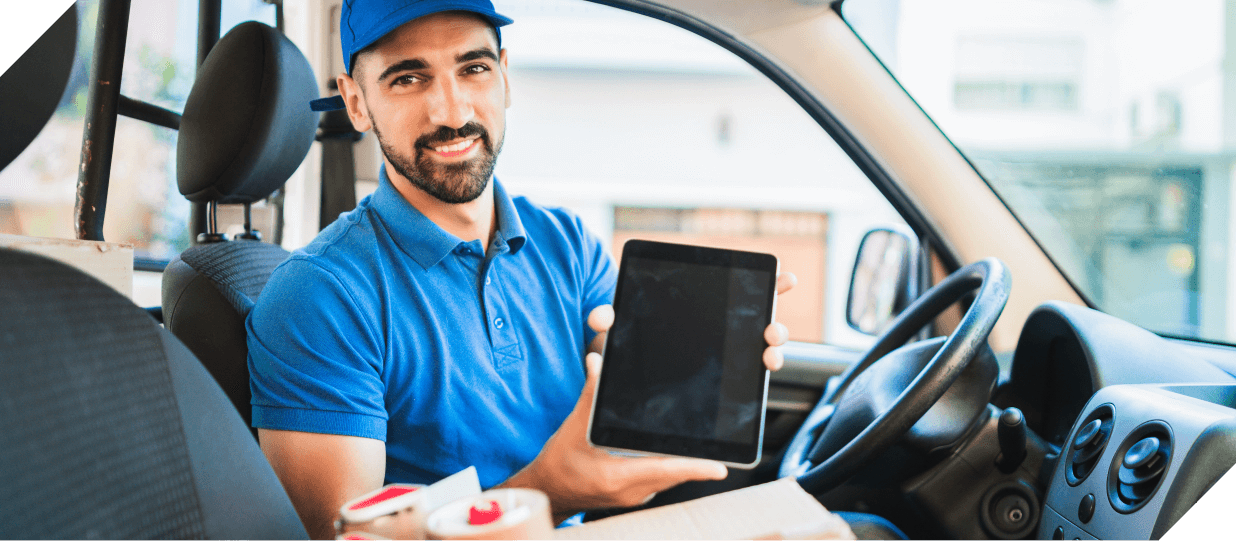
Here is a list of six tech solutions that may be useful for your business to tackle some significant last-mile fulfillment issues.
- Geocoder
-
Your business gets into trouble when you deliver to an incorrect address as it results in the re attempting these deliveries. This eats up your drivers’ operating time, frustrates the customer, and increases delivery costs.
The best way to counter these mistakes is by getting a geocoder. With a geocoding engine, you can easily convert vague addresses into exact geographical coordinates. This helps your delivery partners locate addresses easily and deliver packages on time and in the first attempt.
- Insights and analytics
-
Last-mile delivery demands can only be optimized through complex mathematical operations, which was what academics tried to work out in the form of the traveling salesman problem. However, technology solutions have now been able to compute the optimal route possible between two or more destinations.
But to build these cost-effective and optimally efficient plans for the final mile, you need data that reflects the on-ground reality and it is here that we need the help of advanced analytics.
The key to attaining operational flexibility in your last-mile delivery is advanced analytics. Last-mile decisions without data is mere guesswork that can ramp up costs and kill your brand reputation through consistently delayed and less-than-ideal fulfillment experiences.
With proper insights and analytics, you can easily track what’s happening in the last-mile delivery. You can find answers for some crucial questions like:
- What is the percentage of First Attempted Delivery Rates (FADR)?
- Which hour of the day has the highest frequency of deliveries?
- What time of the day are deliveries made quicker and cost-effective?
- Which delivery zone or region incurs the highest last-mile delivery cost?
- Which driver has the highest average idle time?
- What is the average cost per mile for all deliveries?
- Who are the drivers outperforming and underperforming?
- What was the peak time performance of our deliveries?
- What is the cost of visiting and servicing the stops on the route?
- How much fuel is consumed daily for deliveries per day?
- What is the profit obtained while driving one mile on the route?
By using advanced analytics, you can get answers for critical business questions like these in the final mile. It allows you to obtain a comprehensive picture of your last-mile logistics costs in a comprehensive way. It helps you make informed decisions, rectify logistical weaknesses, and improve delivery efficiency, thereby minimizing delivery costs.
- Live tracking
-
Every second when your customer fails to know the status of order fulfillment makes them frustrated. Especially during unpredictable events, when customers are unable to track the delivery status, they cancel the order. This puts your business in a dire situation.
When you provide the live tracking feature and send timely notifications on order status, your customers trust you more as you’ve met their base expectation of providing complete turn-by-turn visibility. Sharing messages and real-time alerts on Expected Time or Arrival (ETA) helps you avoid failed deliveries. It also reduces your rate of reattempted deliveries resulting in saving more costs.
- Control tower application
-
- Are my fleet plans working properly?
- Are my drivers taking more breaks than the scheduled time?
- Is there a possibility of a Service Level Agreement (SLA) breach?
- How many of my drivers have completed their trips and ready for the next one?
- Is there a possibility of vehicle downtime or a delivery exception?
These are very serious questions on internal visibility and it can make or break your delivery performance.
As fleet managers, you need to know what’s happening to your scheduled plans and tweak them if necessary. Without these updates, you cannot plan upcoming deliveries and this puts your delivery operations at a standstill.
Using a control tower application, you can easily have a bird’s eye view of your delivery operations. Beyond this, it enables you to tweak the delivery schedules based on critical metrics like geography, time, and vehicle type.
- Route Optimization
-
If your vehicles take longer distances, incur high costs, and more time to travel, it means you are spending costs on wasted time and miles. As you work on this fundamental vehicle routing problem, you end up spending unnecessary hours on the process of planning routes. This leads to delays in picking and packing operations from the warehouse which adds to overtime costs.
The recent last-mile delivery trends state that customers want a speeder, flexible, and predictable deliveries. To enable this, it is necessary to get your delivery routes right.
An optimized delivery route is much more than the shortest distance or avoiding traffic. With a route optimization software, you can generate perfect optimal route plans based on the real-world constraints like
- Multiple time windows per stop
- Fuel stops
- Regional regulations of local authorities
- Maximum number of stops per route
- Special vehicle requirements
- Route distance
- Route duration limits
- Proximity to the depot
- Loading and unloading time
- Driver breaks/ Unavailability
- Vehicle capacity utilization
- Scheduling of return orders from customers
- Expected Time of Arrival (ETA)
- Customer-preferred delivery slots
By using these optimal plans generated by a route optimization software, you can minimize the time drivers spend on the road. This helps you minimize the cost and duration and maximize the productivity, Service Level Agreement (SLA) adherence, and customer satisfaction.
- Delivery-linked checkout
-
The success of Amazon Prime in recent years has showcased the benefits of effective time slot management in improved customizability and convenience for users.
By providing different time slot options, you let your customers conveniently choose a time slot that best suits them. Also, it helps you power higher first-attempt rates and on-time deliveries.
It also lets your business unlock multiple streams of revenue. You can offer premium time slot options that can be unlocked on a charge. With multiple time windows and alternate delivery options, you can add predictability to your deliveries in addition to speed.
With a delivery-linked checkout feature, your resource allocation becomes much easier. Based on the time slots highly demanded by your customers, you can plan your fleet requirements. This improves your turnaround times for all orders.
Using a delivery-linked checkout, you can provide sustainable delivery options at checkout that facilitate carbon-efficient route plans. By batching forward and reverse orders from the same service areas together, it minimizes the distance traveled per order. By ensuring high drop density, optimal load capacity, and a lesser number of vehicles, it embeds sustainability into your last-mile delivery.
Locus’ Last-mile delivery software: Tech solution for all your last-mile needs
As e-commerce continues to grow rapidly, the complexity and the competition in last-mile delivery is also expected to increase. Matthias Winkenbach, a research scientist at MIT’s Center for Transportation logistics, highlights that the exponential growth of e-commerce is adding to the congestion in cities. To cope with this increase in demand in a sustainable way, he says, traditional last-mile delivery strategies, which would involve adding more vehicles to a fleet, will not be the most effective way forward.
The best way to handle the ever-changing competition and complexity and differentiate yourself in last-mile delivery is by investing in last-mile delivery software.
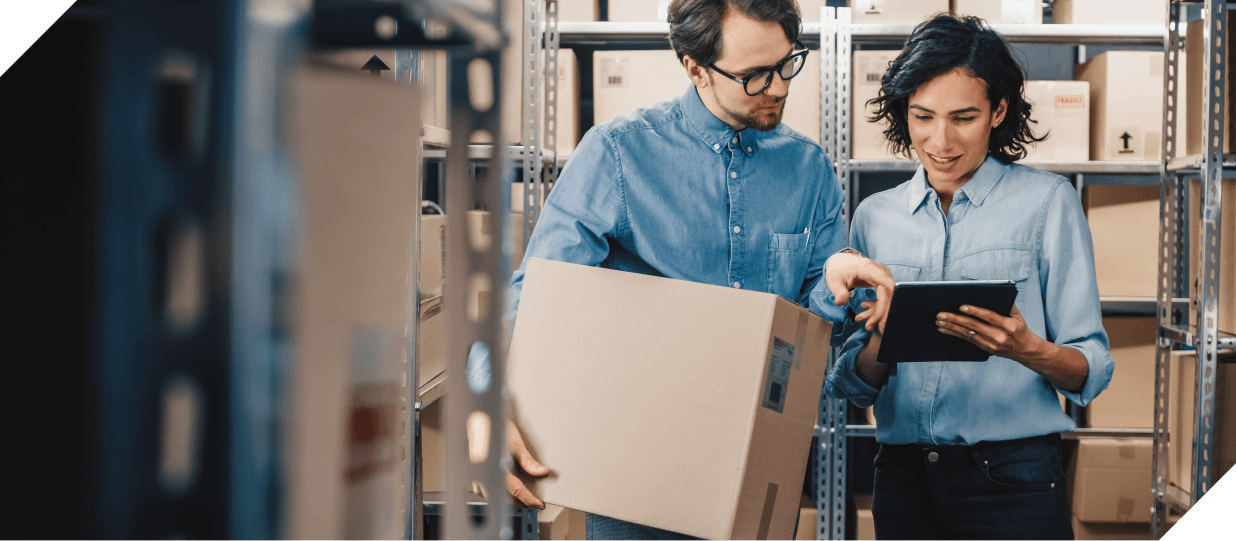
Locus’ last-mile delivery software is an all-in-one solution that handles all your last-mile needs. Its advanced algorithms consider a wide range of constraints to generate the optimal route plans for your fleet. By intelligently clubbing orders based on order priority, location preference, preferred time slots, and order specifications, it maximizes your SLA adherence.
With real-time predictive alerts on vehicle breakdowns, idle time, and delays, Locus’ last-mile delivery solution, improves the transparency of the entire delivery process and overall customer experience. By helping your drivers achieve their daily targets before the end of their shift, it maximizes the efficiency of your delivery executives.
Want to transform your last-mile delivery from tricky to handle - able?
Resources
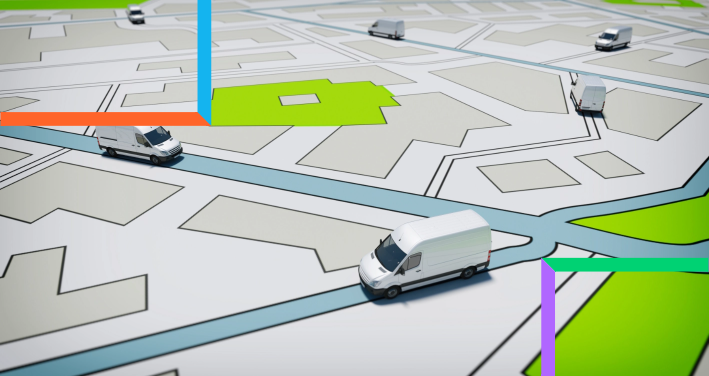
Blog
Multi-stop route planning and why is it important?
Planning multiple routes manually is a burdensome and time-consuming affair. Fleet managers should factor in various route constraints while planning routes such as traffic congestion, roadblocks, and so on. There are likely chances of making mistakes, which can ultimately result in disappointed customers.
Read moreSources:
- 1 https://www.statista.com/statistics/273958/digital-buyer-penetration-in-the-united-states/
- 2 https://news.adobe.com/news/news-details/2022/Adobe-U.S.-Consumers-Spent-1.7-Trillion-Online-During-the-Pandemic-Rapidly-Expanding-the-Digital-Economy/default.aspx
- 3 https://www.statista.com/chart/28414/important-shipping-criteria-to-us-online-shoppers/
- 4 https://www.accenture.com/_acnmedia/PDF-148/Accenture-Sustainable-Mile-POV.pdf
- 5 https://www3.weforum.org/docs/WEF_Future_of_the_last_mile_ecosystem.pdf
- 6 https://www.pwc.com/us/en/services/consulting/library/consumer-intelligence-series/future-of-customer-experience.html
- 7 https://www.statista.com/statistics/816884/last-mile-delivery-logistics-providers-challenges/
- 8 https://www3.weforum.org/docs/WEF_Pandemic_Parcels_and_Public_Vaccination_report_2021.pdf
- 9 https://news.mit.edu/2018/mit-e-commerce-spurs-innovations-last-mile-logistics-0904



